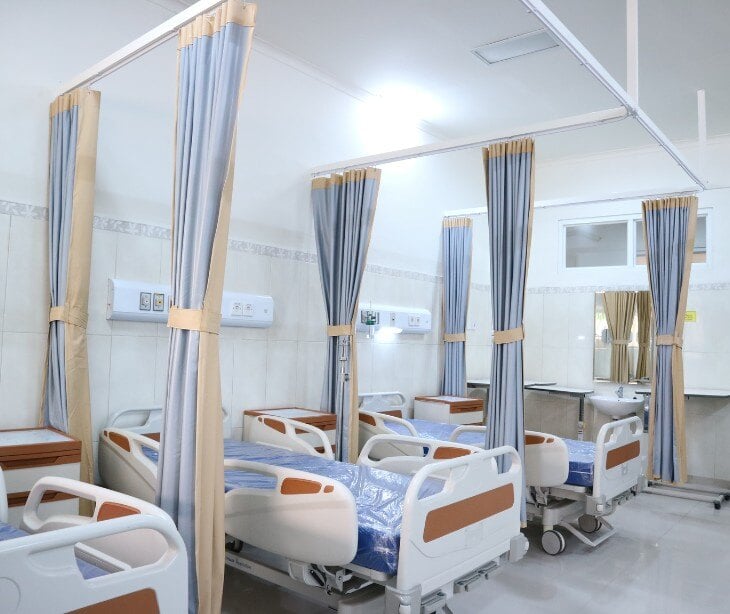%20-%202024-12-18T062339.676.jpg)
Healthcare analytics is making a real difference in patient care. Instead of focusing on how much care is provided, it’s now about improving results and keeping costs down. Analytics helps by turning large amounts of data into clear, useful insights. These insights allow doctors to personalize treatments, spot patterns to improve efficiency and find new ways to advance care.
The growing power of data in healthcare
Data has become one of the most strategic assets in healthcare. It is helping providers move from traditional, reactive care models to more proactive, personalized approaches. Predictive analytics, for example, can identify patients at risk of being readmitted to the hospital, enabling early interventions that reduce complications and costs.
As Vijay Venkatesan, Chief Analytics Officer at Horizon Blue Cross Blue Shield of New Jersey, says, “The data is to me the biggest thing in healthcare.” He goes on to explain the importance of integrating and sharing data to improve outcomes. “It’s going to be critical for healthcare to really kind of realize how to integrate all this information in a meaningful way to provide better care on the patient side,” he says.
Studies show that the integration of data is particularly impactful in managing chronic diseases such as diabetes and hypertension. Coordinated care informed by analytics can lead to better long-term health outcomes, reduced hospital visits, and improved quality of life for patients.
Read also: What is data strategy?
Expanding care beyond traditional settings
The way healthcare is delivered is changing rapidly. Telehealth, wearable devices, and home-based care are replacing the notion that care must happen within the walls of a hospital or clinic. Real-time data from wearables, like glucose monitors and fitness trackers, allows healthcare providers to monitor patients remotely and make informed decisions faster.
For instance, one pilot program that used wearable devices and analytics saw a reduction in emergency room visits. This proactive approach to care powered by data keeps patients healthier while reducing costs. Venkatesan also sees this trend as a major shift: “One thing you are going to see significant movement on is not having the four walls as the way we deliver healthcare,” he says.
Addressing inefficiencies with smarter systems
Administrative inefficiencies are a long-standing issue in healthcare, costing billions annually in unnecessary expenses according to the Peter G. Peterson Foundation. Analytics and artificial intelligence are helping to reduce these inefficiencies by automating repetitive tasks and simplifying processes.
For example, natural language processing tools can answer patients’ questions about insurance coverage in real time, cutting down on manual effort for both patients and providers. This allows healthcare workers to focus more on direct patient care rather than administrative hurdles.
Venkatesan stresses that technology alone isn’t enough—it needs to work seamlessly with other systems. “It’s not about adopting technology for its own sake—it’s about making systems work together,” he explains. When systems are integrated and interoperable, healthcare becomes more efficient and patient experiences improve.
Read also: Natural language processing in healthcare
Advancing medical research and personalized medicine
Analytics isn’t just about improving operations; it’s also driving innovation in medical research and treatment. Advanced platforms are analyzing massive datasets to uncover patterns, predict treatment outcomes, and even identify new drug candidates. These breakthroughs accelerate the development of new treatments and help tailor therapies to individual patients.
According to a study on Revolutionizing clinical trials, “AI has the ability to revolutionize every aspect of running clinical trials, from finding participants to analyzing the results. CROs and medical institutions may improve the efficiency, economy, and timeliness of drug development by using AI algorithms and [machine learning] ML.”
Venkatesan points out that the ultimate goal isn’t just to use data for efficiency but to improve care: “What we make sure is that we’re not using data just for the sake of using data or the sake of making sure that our bottom lines are improving,” he says. “It’s really about whether we are impacting the patient and the care that we provide on their behalf in a meaningful way.”
Protecting patient data
Keeping patient information safe isn’t just about following the rules—it’s about building trust between patients and healthcare providers. Tools like encryption and de-identification help keep sensitive data secure.
“People consume healthcare not because they want to, but because they need to,” Venkatesan says. “What’s important in that relationship is to make sure that the member’s information is protected and we’re not using it for any other intended purpose, other than for the care that the patient needs to receive.” Focusing on data security allows healthcare organizations to harness analytics effectively while preserving patient trust.
Breaking down barriers to adoption
Despite its potential, analytics still face challenges in healthcare. Many systems operate in silos, making it difficult to share and integrate data effectively. Overcoming these barriers is fundamental for healthcare providers to fully benefit from analytics.
“The biggest challenge in healthcare, in general, is data, and a lot of people think that healthcare data cannot be that complicated,” Venkatesan explains. However, healthcare involves a web of interconnected systems that must work together. When these systems are integrated, providers can make better decisions, coordinate care more effectively, and improve outcomes.
The future of healthcare analytics
As healthcare becomes more data-driven, new technologies are expanding the possibilities of analytics. The Internet of Medical Things (IoMT), blockchain, and advanced machine learning are paving the way for more connected and secure healthcare systems.
For example, IoMT devices can continuously monitor patients with chronic conditions and alert providers when intervention is needed. Blockchain could create tamper-proof records for secure data sharing, while machine learning algorithms uncover new insights that improve care. As these technologies improve, the role of analytics in healthcare will only grow, helping providers deliver better, more efficient care.
FAQs
What is healthcare data analytics?
Healthcare data analytics involves analyzing patient data to improve decision-making, enhance patient care, and streamline operations.
What is predictive analytics?
Predictive analytics uses data and advanced algorithms to forecast future health outcomes, enabling proactive and personalized care.
What are the risks of healthcare analytics under HIPAA?
Risks include data breaches, misuse of ePHI, non-compliance penalties, data inaccuracies, and vulnerabilities with third-party vendors.
How can healthcare facilities ensure HIPAA compliance in analytics?
Encrypt data, de-identify patient information, use HIPAA compliant tools, limit access, and perform regular audits.




